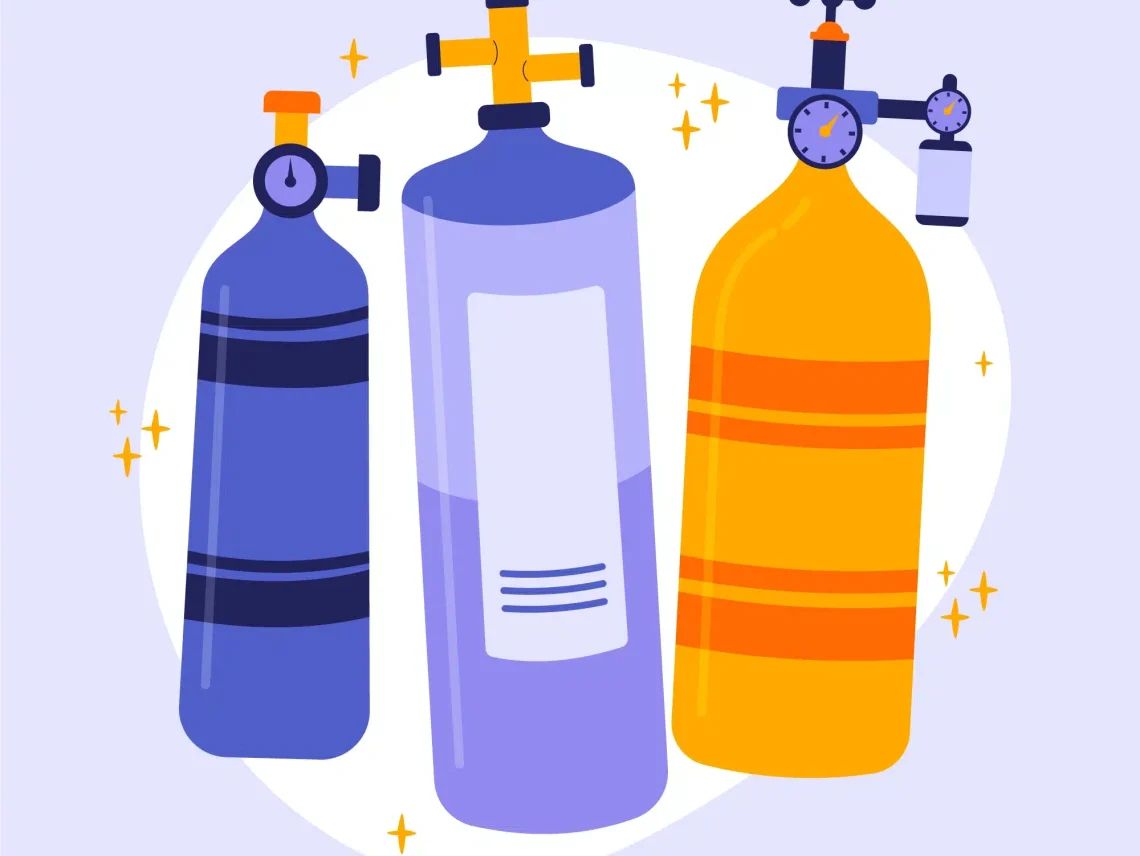
Table of Contents
ToggleAcetylene pressure above 15 PSI can lead to explosive decomposition due to its chemical instability. Proper storage, handling, and adherence to safety standards are crucial to mitigate these risks.
Acetylene, a colorless and highly flammable gas, is widely used in welding, cutting, and chemical synthesis due to its high flame temperature. However, its chemical structure makes it inherently unstable under certain conditions, particularly at elevated pressures. Understanding the risks associated with high-pressure acetylene use is essential for ensuring safety in industrial applications.
Acetylene (C₂H₂) consists of two carbon atoms triple-bonded to each other, each bonded to a hydrogen atom. This structure stores a significant amount of energy, making acetylene highly reactive. When subjected to pressures above 15 PSI, acetylene can undergo explosive decomposition, even in the absence of an ignition source.
Research indicates that acetylene’s instability increases with pressure. At pressures exceeding 15 PSI, the gas becomes more prone to spontaneous decomposition, leading to potential explosions. This phenomenon underscores the importance of maintaining acetylene pressure within safe limits to prevent hazardous incidents.
Acetylene cylinders are designed to prevent the gas from reaching unsafe pressures. They are filled with a porous material, such as crushed firebrick, and saturated with acetone. This design allows acetylene to dissolve in the acetone, preventing the gas from reaching its explosive decomposition pressure.
To ensure safe use, regulatory bodies have established guidelines for acetylene pressure. For instance, OSHA mandates that acetylene should not be generated, piped, or utilized at pressures exceeding 15 PSIG (103 kPa gauge pressure) to prevent unsafe conditions.
The Occupational Safety and Health Administration (OSHA) provides comprehensive regulations for the safe use of acetylene. These include guidelines on cylinder design, handling, storage, and pressure limits to mitigate the risks associated with high-pressure acetylene use.
The National Fire Protection Association (NFPA) also offers standards for acetylene use, focusing on aspects like piping systems and safety measures to prevent accidents related to acetylene pressure.
High-pressure acetylene poses significant risks due to its chemical instability. Adhering to established safety standards and regulations is crucial to prevent explosive incidents. Proper cylinder design, handling, and storage practices are essential for maintaining acetylene pressure within safe limits and ensuring the safety of personnel and equipment.
For further information on acetylene safety and its explosive nature, check out our article on acetylene’s explosive properties. Additionally, understanding the risks of high-pressure acetylene use provides crucial insights into safety standards for acetylene, and you can explore the versatile applications of acetylene in this informative article.
At Red River LLC, we specialize in designing and manufacturing pressure vessels that meet or exceed industry safety standards. Our commitment to quality and safety ensures reliable and secure operations in industries utilizing acetylene. Contact us today to learn more about our solutions and how we can assist in enhancing your safety protocols.
Acetylene pressure refers to the pressure at which acetylene gas is stored or used. Maintaining this pressure within safe limits is crucial to prevent explosive decomposition.
Acetylene is chemically unstable at pressures above 15 PSI. Regulating its pressure ensures it remains within safe limits to prevent hazardous incidents.
Acetylene is stored in cylinders containing a porous material saturated with acetone, allowing the gas to dissolve and preventing it from reaching explosive pressures.
Exceeding safe acetylene pressure limits can lead to explosive decomposition, posing significant safety hazards in industrial settings.
Adhering to regulatory standards, using properly designed cylinders, and following safe handling and storage practices are essential for safe acetylene use.
Acetylene pressure above 15 PSI increases the risk of explosive decomposition.
Proper cylinder design, including the use of porous materials and acetone, helps maintain safe acetylene pressure.
Regulatory bodies like OSHA and NFPA provide guidelines to ensure safe acetylene use.
Adhering to established safety standards is crucial to prevent hazardous incidents.
Red River LLC offers solutions to enhance safety in industries utilizing acetylene.
Table of Contents
ToggleIn the realm of industrial solutions, Red River emerges as a pioneer, offering a diverse range of custom-engineered products and facilities. Among our specialties is the design and production of Custom/OEM Pressure Vessels, meticulously crafted to meet individual client requirements, ensuring performance under various pressure conditions. Our expertise extends to the domain of prefabrication, where Red River leads with distinction.
The company excels in creating prefabricated facilities, modules, and packages, reinforcing its stance as a forerunner in innovation and quality. This proficiency is further mirrored in their Modular Skids offering, where they provide an array of Modular Fabricated Skid Packages and Packaged equipment. Each piece is tailored to client specifications, underlining their commitment to delivering precision and excellence in every project they undertake.